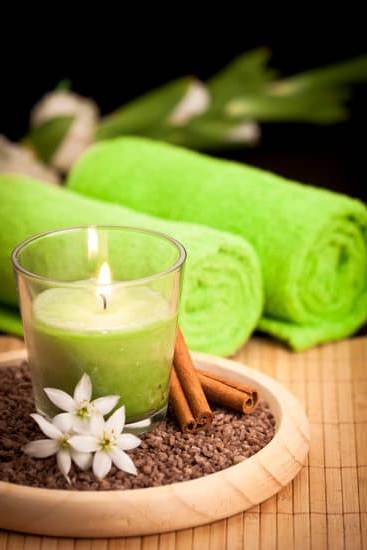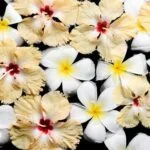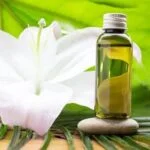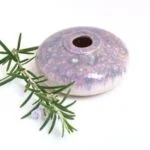Aromatherapy has gained widespread popularity as a natural approach to enhancing physical, emotional, and mental well-being. At the heart of aromatherapy is the use of essential oils, which are extracted from plants and believed to have therapeutic properties.
One common method of experiencing aromatherapy is through the use of diffusers, which are devices designed to disperse essential oils into the air for inhalation. This article will delve into the world of diffusers and their role in aromatherapy, exploring their history, types, benefits, mechanics, popular essential oils used, and best practices for utilization.
The practice of aromatherapy dates back thousands of years and has been utilized by various cultures around the world for its healing properties. From ancient civilizations to modern-day spas and wellness centers, aromatherapy continues to be embraced for its potential to alleviate stress, improve sleep quality, elevate mood, and promote relaxation. The use of diffusers in this practice has become increasingly prevalent due to their ability to effectively disperse essential oils into the air for inhalation.
In this article, we will examine the history of diffusers in aromatherapy, trace their origins and evolution over time, explore different types such as ultrasonic, nebulizing, and heat diffusers. Additionally, we will dive into the benefits of using diffusers in aromatherapy and how they work to disperse essential oils into the air.
Lastly, we will highlight popular essential oils used in diffusers for aromatherapy and provide best practices for effectively and safely utilizing diffusers at home or in a professional setting. Stay tuned as we uncover the captivating world of diffusers in the realm of aromatherapy.
History of Diffusers
The history of diffusers in aromatherapy dates back thousands of years, with evidence of their use found in ancient civilizations such as Egypt, Rome, and Greece. The concept of using essential oils for their therapeutic properties has been a central tenet of many traditional healing practices around the world. In these early cultures, diffusers were often simple vessels that allowed for the gentle heating or vaporization of aromatic substances to disperse their fragrance and benefits.
As time progressed, diffuser technology evolved to include more sophisticated methods of dispersing essential oils. In the 20th century, the development of electricity-powered diffusers revolutionized the practice of aromatherapy, allowing for more precise control over the dispersion of essential oils into the air. This marked a significant shift from traditional methods such as burning herbs or oils on charcoal to achieve aromatic effects.
In recent decades, the popularity and accessibility of aromatherapy have led to further advancements in diffuser design and functionality. Modern diffusers now come in various forms, including ultrasonic diffusers, nebulizing diffusers, and heat diffusers. These innovations have made it easier than ever for individuals to enjoy the benefits of aromatherapy in their homes or professional settings.
Overall, the history of diffusers in aromatherapy showcases how this practice has evolved alongside advancements in technology and our understanding of essential oils. Today, diffusers are integral tools for harnessing the therapeutic properties of aromatic substances and are widely used for enhancing well-being and creating pleasant environments.
Types of Diffusers
Aromatherapy has become a popular method for promoting relaxation, improving sleep, and enhancing overall well-being. One of the key tools used in aromatherapy is a diffuser, which disperses essential oils into the air, allowing individuals to benefit from their therapeutic properties. There are several types of diffusers that serve this purpose, each with its own unique features and benefits.
- Ultrasonic Diffusers: These diffusers work by creating ultrasonic vibrations that break down essential oils into a fine mist that is then dispersed into the air. They also act as humidifiers, adding moisture to the air which can be beneficial for dry environments.
- Nebulizing Diffusers: Unlike ultrasonic diffusers, nebulizing diffusers do not require water or heat to disperse essential oils. Instead, they use pressurized air to create a fine mist of pure essential oil particles, making them highly concentrated and effective for therapeutic use.
- Heat Diffusers: Heat diffusers utilize heat to evaporate essential oils and release their aroma into the air. While they are relatively simple in design, they may alter the chemical composition of some essential oils due to the application of heat.
Each type of diffuser has its own advantages and considerations when it comes to using them for aromatherapy purposes. Ultrasonic diffusers are often favored for their ability to also function as humidifiers, while nebulizing diffusers are appreciated for their potency in dispersing undiluted essential oils. On the other hand, heat diffusers offer simplicity and ease of use. It’s important for individuals to consider their specific needs and preferences when selecting a diffuser for aromatherapy.
In addition to these three main types of diffusers, there are other specialized options available in the market such as evaporative diffusers and reed diffusers. Understanding the differences between these various types can help individuals make an informed decision about which one will best suit their aromatherapy needs.
Benefits of Using Diffusers in Aromatherapy
Diffusers play a crucial role in aromatherapy, as they are responsible for dispersing essential oils into the air, allowing individuals to experience the therapeutic benefits of these oils. Some of the key advantages of using diffusers for aromatherapy include stress relief, improved sleep, and mood enhancement. Here are some of the specific benefits that come from using diffusers in aromatherapy:
- Stress Relief: Aromatherapy diffusers can help create a calming and relaxing environment, which can effectively reduce stress and anxiety levels. Certain essential oils, such as lavender, chamomile, and bergamot, are known for their stress-relieving properties when used in diffusers.
- Improved Sleep: Diffusing essential oils like lavender or roman chamomile before bedtime can promote relaxation and improve sleep quality. The soothing aroma released by the diffuser can help individuals unwind and prepare for a restful night’s sleep.
- Mood Enhancement: Using uplifting essential oils like citrus or peppermint in a diffuser can help elevate mood and increase feelings of happiness and positivity. This makes diffusers an ideal tool for creating a welcoming atmosphere in both homes and professional environments.
In addition to these benefits, it is important to note that diffusers used for aromatherapy have also been reported to contribute to improved mental clarity and focus. By consistently utilizing specific essential oils in a diffuser during work hours or while studying, individuals may notice enhanced cognitive function.
Furthermore, compared to other methods of applying essential oils (such as topical application or ingestion), diffusion through a diffuser is generally considered a safe way to enjoy the therapeutic effects of these oils without direct skin contact or internal consumption. However, it is crucial to follow best practices when using diffusers to ensure safety and effectiveness.
How Diffusers Work in Aromatherapy
A diffuser is an essential tool in aromatherapy, as it is responsible for dispersing essential oils into the air, allowing individuals to experience the therapeutic benefits of aromatherapy. There are different types of diffusers used for aromatherapy, each working in a unique way to release essential oils into the surrounding environment.
Types of Diffusion
There are several methods through which diffusers disperse essential oils. Ultrasonic diffusers use ultrasonic vibrations to break down essential oils and water into particles that are then released into the air as a fine mist. Nebulizing diffusers, on the other hand, do not require water and instead use pressurized air to disperse undiluted essential oils as a vapor. Heat diffusers utilize heat to evaporate the essential oils and release their aroma into the air.
Mechanics of Diffusers
Regardless of their specific type, all diffusers function by breaking down molecules of essential oils and dispersing them into the air, allowing individuals to inhale or absorb them through skin contact. This process is what enables individuals to experience the various therapeutic benefits associated with aromatherapy.
Dispersing Essential Oils
In addition to breaking down the molecules of essential oils, diffusers also help in evenly dispersing them throughout a space. This ensures that individuals can experience consistent exposure to the properties of different essential oils, whether they are looking for stress relief, improved sleep, enhanced mood, or other potential benefits from aromatherapy.
Popular Essential Oils Used in Diffusers
Aromatherapy has gained popularity in recent years as a natural and holistic approach to health and wellness. One of the key components of aromatherapy is the use of essential oils, which are derived from plants and are known for their therapeutic properties. When it comes to using diffusers for aromatherapy, there are several popular essential oils that are commonly used due to their soothing and healing effects.
Lavender essential oil is perhaps one of the most well-known and widely used oils in aromatherapy. It is prized for its calming and relaxing properties, making it an ideal choice for promoting better sleep and reducing stress and anxiety. Eucalyptus essential oil is another popular option, renowned for its decongestant and antiseptic qualities.
Eucalyptus oil is often used to help clear nasal passages and ease respiratory conditions. Peppermint essential oil is also frequently utilized in diffusers for its invigorating scent that can promote mental clarity, relieve headaches, and soothe nausea.
These essential oils can be diffused using various types of diffusers such as ultrasonic, nebulizing, or heat diffusers. Each method of diffusion has its unique way of dispersing the oils into the air, allowing their aroma and therapeutic benefits to fill the surrounding space.
| Essential Oil | Therapeutic Properties |
|---|---|
| Lavender | Calming, relaxing, sleep-inducing |
| Eucalyptus | Decongestant, antiseptic |
| Peppermint | Invigorating, relieves headaches, soothes nausea |
Best Practices for Using Diffusers in Aromatherapy
When it comes to using diffusers for aromatherapy, there are several best practices that can help ensure a safe and effective experience. Whether you are using a diffuser at home or in a professional setting, it is important to follow these tips to maximize the benefits of your aromatherapy practice.
First and foremost, always use high-quality essential oils in your diffuser. It is important to choose pure, natural oils that are free from synthetic additives or contaminants. Using low-quality oils can not only diminish the therapeutic benefits of aromatherapy but also pose potential health risks. Additionally, be mindful of any allergies or sensitivities that you or others in your environment may have and choose essential oils accordingly.
Proper maintenance of your diffuser is crucial for both safety and effectiveness. Regular cleaning and upkeep can help prevent the buildup of residue and bacteria, which could compromise the quality of the essential oils being dispersed. Follow the manufacturer’s instructions for cleaning and maintenance, and be sure to use distilled water when refilling your diffuser to avoid mineral deposits.
Lastly, consider the placement of your diffuser in the space where you will be practicing aromatherapy. While diffusers are generally safe when used as directed, it is important to position them in a way that allows for optimal dispersion without exposing individuals to an overwhelming concentration of essential oils. Be mindful of children, pets, and individuals with respiratory conditions who may be more sensitive to strong scents.
| Tip | Description |
|---|---|
| Use High-Quality Oils | Choose pure, natural oils free from synthetic additives. |
| Maintain Your Diffuser | Regular cleaning and using distilled water for refilling. |
| Consider Placement | Position the diffuser for optimal dispersion while considering sensitivity. |
Conclusion
In conclusion, diffusers play a crucial role in enhancing the practice of aromatherapy. The use of diffusers allows for the easy and effective dispersion of essential oils, providing numerous benefits such as stress relief, improved sleep, and mood enhancement.
By utilizing different types of diffusers, such as ultrasonic, nebulizing, and heat diffusers, individuals can customize their aromatherapy experience to suit their specific needs and preferences. Additionally, popular essential oils like lavender, eucalyptus, and peppermint are commonly used in diffusers to promote relaxation and overall well-being.
Furthermore, understanding how diffusers work in aromatherapy is essential for maximizing their effectiveness. The mechanics of diffusers involve dispersing essential oils into the air, allowing for inhalation and absorption through the skin. This method of delivery ensures that the therapeutic properties of essential oils are effectively utilized for their intended purposes. Whether used at home or in a professional setting, following best practices for using diffusers is necessary to ensure safety and optimum results in aromatherapy sessions.
Ultimately, diffusers are instrumental in creating a holistic and tranquil environment where individuals can benefit from the therapeutic properties of essential oils. As advancements continue to be made in the field of aromatherapy and diffuser technology, it is evident that the use of diffusers will remain an integral part of this practice for promoting health and wellness. Whether it’s for personal relaxation or professional therapy sessions, diffusers are indeed a valuable tool in enhancing the overall experience of aromatherapy.
Frequently Asked Questions
Do I Need a Diffuser for Aromatherapy?
A diffuser is not strictly necessary for aromatherapy, but it can enhance the benefits of essential oils by dispersing their scent and promoting a calming atmosphere. It can also help to improve air quality.
What Is the Purpose of a Diffuser?
The purpose of a diffuser is to disperse essential oils into the air, allowing their natural aromas to fill a room or space. This can create a relaxing or invigorating atmosphere, depending on the essential oils used.
What Is the Downside of Diffusers?
One downside of diffusers is that some people may find the aroma too strong or overpowering, especially in smaller spaces. Additionally, if not used properly or if low-quality essential oils are used, diffusers may contribute to indoor air pollution.

Are you looking for a natural way to improve your health and wellbeing?
If so, aromatherapy may be the answer for you.





